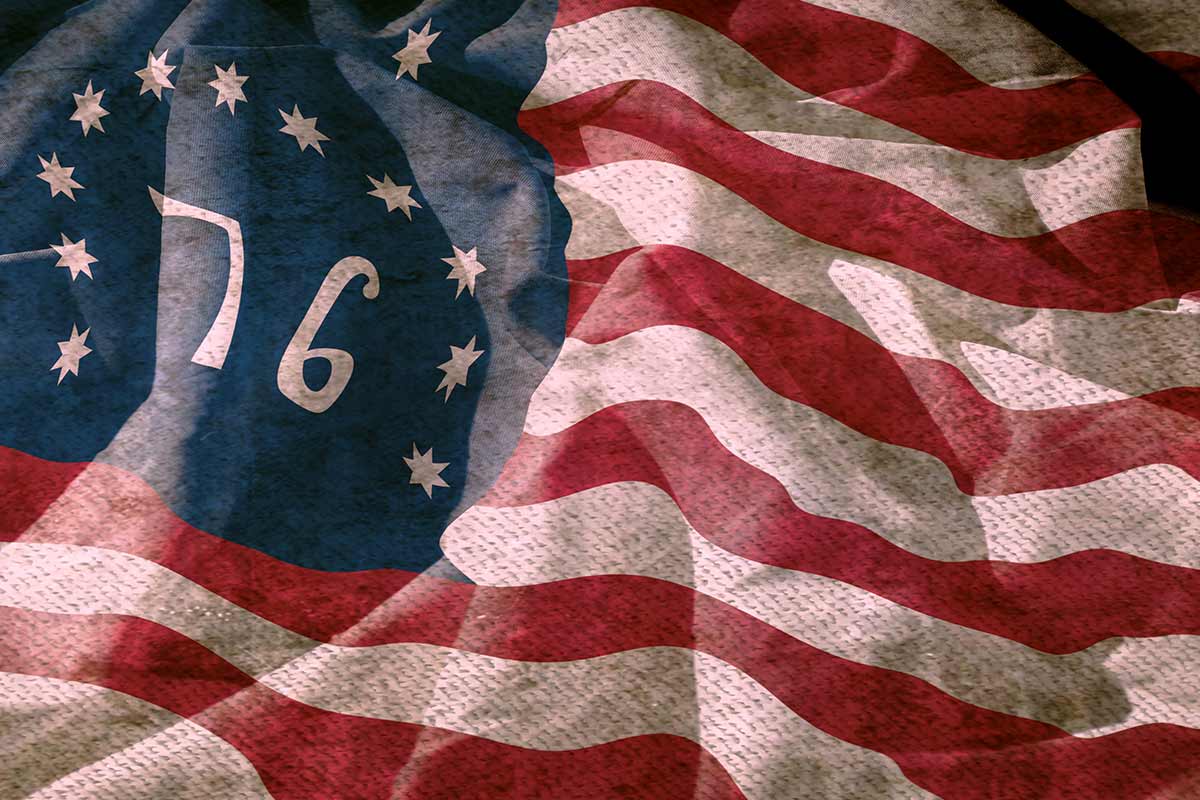Unfolding the Stars and Stripes: The History of Three Iconic American Flags

A Look at Iconic American Flags
The American flag is a powerful symbol that embodies the ideals, struggles, and triumphs of the United States of America. Over the course of history, several flags have held significant importance, each telling a unique story. In this blog post, we'll delve into the fascinating history of three iconic American flags: the Betsy Ross flag, the Bennington flag, and the Star-Spangled Banner flag.
3 Flags for a Growing Nation
The Betsy Ross Flag
The Betsy Ross flag is widely regarded as the first official flag of the United States. Legend has it that in 1776, Betsy Ross, a skilled Philadelphia seamstress, was commissioned by George Washington to create a flag for the new nation. This flag featured thirteen alternating red and white stripes, representing the original thirteen colonies, and a circle of thirteen stars on a blue field, symbolizing unity.
The story of the Betsy Ross flag is that it was to signify the beginning of a new nation. On June 14, 1777, the Continental Congress passed an official act which dictated a new flag for a new nation. The patriotic symbolism surrounding this event and the beginning of our nation is one not to be taken lightly.
While the story of Betsy Ross's involvement in designing the flag has been debated, the flag gained popularity during the 19th century as a symbol of American patriotism. Today, it is recognized as a historic emblem that pays homage to the country's early struggle for independence.
The Bennington Flag
The Bennington flag, also known as the "76" flag or the "Victory" flag, emerged during the American Revolutionary War. Like many Revolution era flags, the Bennington features 13 stars and 13 stripes, symbolic of the 13 American colonies that were in a state of rebellion against Great Britain. The Bennington version is easily identified by a large '76' in the canton, recalling the year 1776, when the Declaration of Independence was signed. Another distinctive feature of the Bennington flag is the arrangement of the 13 stripes, with white being outermost (rather than red being outermost as in most US flags). Also, its stars have seven points each (instead of the now-standard five points) and the blue canton is taller than on other flags, spanning nine instead of seven of the thirteen stripes.
The Star-Spangled Banner Flag
The Star-Spangled Banner flag is perhaps the most famous American flag of all. It inspired Francis Scott Key to write the poem that later became the U.S. national anthem. The flag's story is tied to the Battle of Baltimore in 1814 during the War of 1812.
Fort McHenry, defending Baltimore's harbor, endured a relentless bombardment by the British navy. Through the chaos and smoke, Francis Scott Key saw the American flag still waving defiantly over the fort at dawn's early light. The flag, hand-sewn by Mary Pickersgill, featured fifteen stars and fifteen stripes to represent the fifteen states of the time.
This flag's endurance during the battle became a symbol of American resilience and determination. Today, it is housed in the Smithsonian National Museum of American History, serving as a poignant reminder of the nation's spirit during times of adversity.
It is on exhibit at the National Museum of American History, Smithsonian Institution. Seeing the flag flying over Fort McHenry on the morning of September 14, 1814, after the battle ended, Francis Scott Key was inspired to write the poem "Defence of Fort M'Henry". These words were written by Key and set to the tune of "To Anacreon in Heaven", a popular song at the time, by John Stafford Smith. In 1931 the song became the national anthem of the United States.
With fifteen stripes, the Star-Spangled Banner remains the only official American flag to bear more than thirteen stripes.
What does this all mean?
The Betsy Ross flag, the Bennington flag, and the Star-Spangled Banner flag all carry immense historical significance in the United States. Each flag represents a different chapter in the nation's journey towards independence, freedom, and resilience.
As we look at these flags, we’re reminded of the bravery and sacrifice of those who fought for liberty. They serve as enduring symbols of the American spirit, inspiring us to uphold the values they represent. The history of these flags intertwines with the story of a nation that continues to strive for a more perfect union, making them an integral part of America's rich heritage.



0 comments